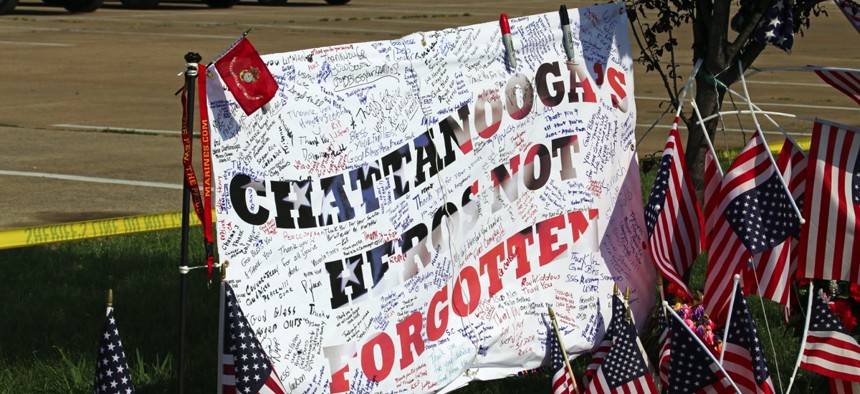Getting Tough on Hate Crimes

Mayors are alarmed by the increasing number of hate crimes across the U.S., recognizing prevention is better than prosecution.
WASHINGTON — Mayors are speaking out about the increase in hate crimes across the U.S. in greater numbers, making the issue a focus of the final day of their winter meeting in the nation’s capital.
Earlier this week Boston University released its annual Menino Survey of Mayors, which found 90 percent of them viewed racial problems as widespread in their communities
That figure corresponds with the FBI’s November release of 2017 crime data showing about 7,200 hate crimes reported across 16,000 police departments, a 17 percent increase from 2016.
The Anti-Defamation League’s top policy recommendation for mayors is to use their bully pulpit to speak out.
“The law is a blunt instrument when it comes to addressing hate,” Michael Lieberman, Washington counsel for the ADL, told the U.S. Conference of Mayors on Friday during the organization’s annual winter meeting. “It’s much better to prevent it in the first place.”
Most hate crimes involve vandalism like graffiti or minor assaults that won’t garner national attention, but ignoring minor ones will only lead to some residents “living in fear,” said Tom Manger, the police chief in Montgomery County, Maryland, whose department studied hate crimes.
Manger recommend assigning a detective to every hate crime because it’s not a big lift, and Montgomery County catches the perpetrator in slightly more than half of all cases. The county also puts out a press release condemning each act.
In 67 percent of resolved cases the perpetrator is identified as being under the age of 18, Manger said, which is why the county has put together an educational program about the harm of hate crimes—adolescents being more impressionable than white supremacists.
“Sometimes people struggle with: Was a particular incident a hate crime or not?” Manger said. “We make a mistake if we want to get into a debate publicly about whether something was a hate crime.”
In July 2015, self-radicalized terrorist Muhammad Youssef Abdulazeez shot and killed five serviceman in an attack on two military installations in Chattanooga, Tennessee. Mayor Andy Berke was at a press conference, when he was handed a slip of paper with word of the shooting and abruptly ended the event.
Chattanooga’s goal in the shooting’s aftermath was to prevent anyone else from being radicalized as a result of the incident. The city joined the international Strong Cities Network, which develops strategies to combat violent extremism in communities.
Abdulazeez was a Chattanooga native but radicalized elsewhere before returning, which made Berke realize the issue spans jurisdictions.
“We’re all in this together in a really critical way,” Berke said.
ADL has tracked anti-Semitic incidents in the U.S. since 1979, its 2017 audit finding about 2,000 such hate crimes—a 57 percent increase on the previous year and the largest single-year increase in the report’s history.
FBI data further showed an 18 percent increase in race-based hate crimes, 16 percent increase in hate crimes against African-Americans—who’ve accounted for the plurality of all such crimes since 1990—20 percent increase against Asian Pacific-Americans, 63 percent increase against Native Americans, and 24 percent increase against Latinos. Hate crimes against Arab Americans doubled.
Religion-based hate crimes increased 23 percent, according to FBI data, with Jews the victims in 37 percent of such crimes. Jew always account for 50 to 80 percent of all religion-based hate crimes, Lieberman said, despite representing only 2.4 percent of the U.S. population.
Hate crimes against Muslims decreased slightly in 2017, but they still account for the third-largest number since 1990. And 5 percent of hate crimes targeted people based on their sexual orientation, according to FBI data.
Most hate crimes are not committed by organized hate groups, but all 50 of the extremist murders in 2017 were committed by right-wing extremists for the first time, Lieberman said.
“Every city should have a hate crime policy,” Lieberman said.
Charleston, South Carolina, which saw nine African Americans gunned down in church by a white supremacist in June 2015, created its own hate crime ordinance in November because the state lacks one.
The city further commemorates its tragedy annually with a community celebration of forgiveness.
“This is a club that many of us, unfortunately, are apart of or think about being apart of,” Berke said.
Dave Nyczepir is a News Editor at Route Fifty and is based in Washington, D.C.
NEXT STORY: President Trump Signs Extension of Federal Welfare Program






